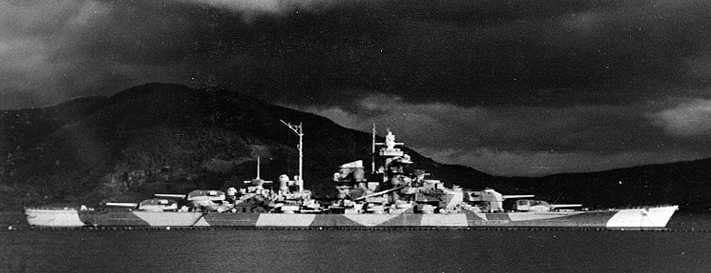
Used on the famous Bismarck class battleships, this weapon is usually - but incorrectly - referred to as being 47 calibers long, but it was actually 51.66 calibers in overall length (German Method) and 48.43 calibers in bore length (USA/UK Method). It is also sometimes mistakenly described as being a carry over from the 38 cm L/45 guns used on the World War I-era Bayern class battleships. In reality, these guns were built to a completely new design having little in common with the older guns other than their caliber.
A modified version of these guns known as Siegfried was widely used as coastal artillery. The best-known of these was Batterie Todt, named after Armaments Minister Dr. Fritz Todt who had been killed in a plane crash. This battery consisted of four guns located near Haringzelles about 3 km (1.8 miles) east of Cap Gris-Nez and which often fired across the Straits of Dover. Four more guns were used at Oksby (Denmark), four at Hanstead (Denmark) and three at Kristiansand (Norway). After the war, the battery at Kristiansand was incorporated into the Norwegian coastal artillery and the cannons were fired for the last time in 1952.
Besides the Bismarck and Tirpitz, it had been planned to rearm the small battleships Scharnhorst and Gneisenau with these weapons. No serious work ever started for Scharnhorst, but three turrets were under construction during the early 1940s to rearm Gneisenau. After Gneisenau was badly damaged in 1942, these three turrets plus an additional one originally intended for the Soviet Union were reallocated for use as coastal artillery. The initial plan was to install two of these turrets at Cap de la Hague and the other two at Paimpol in France, but this was never implemented. Work on putting two of these turrets at Oksby in Denmark was well advanced but incomplete by the end of the war. Of the four guns allocated for Oksby, three were scrapped in situ while the fourth was saved and sent to Hanstead post-war. See photographs below.
The Soviet Union placed an order for sixteen of these guns which were intended for the battlecruisers Sevastopol and Kronstadt (Project 69), but no guns were ever delivered.
Constructed of loose liner, A tube with four rings shrunk over it for about two-thirds of the length from the breech, a jacket shrunk over about two-thirds of the ring layer, a breech end-piece, breech block supporting piece and a horizontal sliding breech block. Later guns had a loose liner that was removed from the breech end, but these were not universally interchangeable.
At least two guns still survive. One is on display at Museumcenter Hanstholm and the other at Kristiansand Cannon Museum near Kristiansand, Norway.
| Designation | 38 cm (14.96") SK C/34 |
|---|---|
| Ship Class Used On | Bismarck and Schlachtschiff "O" Classes
Gneisenau as planned to be rebuilt Soviet Kronstadt class |
| Date Of Design | 1934 |
| Date In Service | 1940 |
| Gun Weight 1 | Including breech mechanism: 244,713 lbs. (111,000 kg) |
| Gun Length oa | 772.8 in. (19.630 m) |
| Bore Length | 724.6 in. (18.405 m) |
| Rifling Length | 629.2 in. (15.982 m) |
| Number Of Grooves | (90) 0.177 in deep x 0.306 in (4.5 mm x 7.76 mm) |
| Lands | 0.217 in (5.5 mm) |
| Twist | Increasing RH 1 in 36 to 1 in 30 |
| Chamber Volume 2 | 19,467 in3 (319 dm3) |
| Rate Of Fire | 2.3 to 3 rounds per minute 3 4 |
- ^This weight figure was for early production weapons. Later weapons were 661 lbs. (300 kg) lighter.
- ^Siegfried guns built for coastal defense had a larger chamber volume of 22,072 in3 (361.7 dm3) and shorter rifling length of 620 in (15.748 m).
- ^Many references claim that this was the fastest firing large caliber gun ever built. The ROF figures listed above represent generally published data that would support that claim. However, Krupp official documents cite the ROF as being 26 seconds at a four degree elevation, not notably faster than that of other nations' large-caliber weapons. Note that at this elevation the range would be considerably less than 10,000 meters. It is possible that well trained gun crews would reduce this time to the 20 seconds necessary to meet a ROF of 3 times per minute. A May 1941 report by the German Artillerieversuchskommando - AVSK (Artillery Testing Command for Ships) stated that the turret ammunition hoists on Bismarck were capable of delivering between 23 and 25 rounds per minute (for all four turrets), the equivalent of 3 rounds per minute per gun. However, this same report stated that design faults in the hoists led to two significant breakdowns during the evaluation, both of which caused long interruptions in the ammunition supply. Finally, it should be noted that Bismarck fired a total of 93 rounds during her thirteen minutes of firing at the Denmark Strait battle, which is actually less than one round per gun per minute.
- ^Guns used in single coastal artillery mountings (BSG) in Denmark had very little power assist and were hand rammed. They are said to have had a ROF of one shot every 70 seconds. The twin mountings originally intended for Gneisenau but allocated for Denmark coastal defense would have had a ROF similar to the ships.
| Type | Cartridge - Bag |
|---|---|
| Projectile Types and Weights 1a | Ship Projectiles
APC L/4,4: 1,764 lbs. (800 kg) HE L/4,5 base fuze: 1,764 lbs. (800 kg) 2a HE L/4,6 nose fuze 3a: 1,764 lbs. (800 kg) HE L/4,6 nose fuze AA 4a: about 1,740 lbs. (789 kg) Coastal Artillery Projectiles
|
| Bursting Charge 5a | APC L/4,4: 44.74 lbs. (20.295 kg) TNT 6a HE L/4,5 base fuze: 77.24 lbs. (35.036 kg) TNT 7a HE L/4,6 nose fuze: 138.64 lbs. (62.885 kg) TNT 8a HE L/4,6 nose fuze AA: 138.64 lbs. (62.885 kg) TNT 8a Siegfried HE L/4,5: 152.12 lbs. (69.0 kg) TNT 9a |
| Projectile Length | APC L/4,4: 65.8 in (167.2 cm)
HE L/4,5 base fuze: 67.3 in (171.0 cm) HE L/4,6 nose fuze: 68.8 in (174.8 cm) HE L/4,6 nose fuze AA: N/A Siegfried HE L/4,5: 67.3 in (171.0 cm)
|
| Propellant Charge 11a 12a | For SK C/34 Guns
Fore Charge: 219.4 lbs. (99.5 kg) RP C/32 (840/800 x 16/7) + (800 x 175/163 powder center tube) Rear Charge: 245.8 lbs. (111.5 kg) RP C/32 (850/820 x 16/7) + (826 x 92/80 powder center tube) - or - Fore Charge: 219.4 lbs. (99.5 kg) RP C/38 (810/800 x 17/7) + (800 x 175/163 powder center tube)
For Siegfried Guns
- or - Fore Charge: 315.3 lbs. (143.0 kg) RP C/40 (1305/1285 x 13/4,3) + 1305 x 230/220 powder center tube)
|
| Cartridge Case Type, Size and Weight | Brass, 380 x 900 mm 14a, 154 lbs. (70 kg) |
| Muzzle Velocity | For naval shells: 2,690 fps (820 mps)
For coastal artillery shells: 3,445 fps (1,050 mps) |
| Working Pressure | 20.3 tons/in2 (3,200 kg/cm2) |
| Approximate Barrel Life 15a | 180 - 210 rounds |
| Ammunition stowage per gun 16a | 108 rounds |
- ^
Actual German designations APC L/4,4 38 cm Psgr. L/4,4 (m.Hb) HE L/4,5 base fuze 38 cm Spgr. L/4,5 Bdz (m.Hb) HE L/4,6 nose fuze 38 cm Spgr. L/4,6 Kz (m.Hb) HE L/4,6 nose fuze, AA 38 cm Spgr. L/4,6 Kz (m.Hb) – Haube abgeschraubt [unscrewed cap] Siegfried HE L/4,5 38 cm Si-Gr. L/4,5 Bdz u. Kz (m.Hb) HE L/4,4 base and nose fuze 38 cm Spgr. L/4,4 Bdz u. Kz (m.Hb) - ^The HE L/4,5 base fuze projectile (38 cm Spgr. L/4,5 Bdz) had an AP cap, making it more of a SAPC type of projectile. See sketch below.
- ^German HE Nose Fuzed projectiles with ballistic caps had a rod between the nose of the shell and the fuze to improve performance when striking obliquely. See details on the 12.7 cm SK C/34 datapage.
- ^The post-war USN NAVTECMISEU Technical Report #191-45 "Standard German Projectile Fuzes" lists the time fuze Z.Z. S/60 nA as being used on the 38 cm Spgr L/4,6 Kz (m.Hb) which implicitly means that sometime during the war an AA version of this projectile was issued. This AA projectile was the same as the standard HE Nose Fuze projectile, but had a time fuze in place of the instantaneous impact fuze and did not use the ballistic cap (windshield). These were specified as having a maximum AA range of 22,000 yards (20,100 m). See Anti-Aircraft Projectiles for a sketch of a similarly modified 15 cm projectile. These special projectiles were supplied to Tirpitz after she was damaged by British carrier aircraft attacks on 3 April 1944. They were then used by Tirpitz during further British aerial attacks launched between August and October 1944. Finally, she was attacked in her Norwegian Fjord on 12 November 1944 by British Lancaster bombers carrying "Tallboy" bombs. Tirpitz opened fire with her 38 cm guns on the British bombers at 12,500 yards (11,200 m) and disrupted their initial formation but failed to damage any aircraft. The Lancasters dropped 29 bombs of which at least two and possibly three struck Tirpitz, including one that did not explode, plus seven near misses. Tirpitz capsized shortly afterwards.
- ^Burster weights (reiner Sprengstoff) from M.Dv. Nr. 198 and from "German Capital Ships of World War Two."
- ^The burster for the APC L/4,4 projectile was made from Fp 25, Fp 20, Fp 10 and Fp 5.
- ^The burster for the HE L/4,5 base fuze projectile was made from Fp 25, Fp 20, Fp 10 and Fp 5.
- ^The burster for the Siegfried projectile was made entirely with Fp 1.
- ^The burster for the HE L/4,4 base and nose fuze projectile was made entirely with Fp 1.
- ^These guns, like most large caliber German guns, used a "fore charge" which was propellant in a silk bag, and a "rear charge" which was propellant in a brass case. The brass case helped to seal the breech of the gun. Fore and rear charges were rammed together. See sketches below.
- ^All of these charges were used for both the 1,764 lbs. (800 kg) projectiles and for the lighter coastal artillery projectiles.
- ^The Special Charge was used together with the RP C/38 fore and rear charges, but it is not clear as to when this would be used.
- ^The cartridge rim diameter was 420 mm.
- ^With the lighter coastal artillery projectiles, barrel life increased to nearly 350 rounds.
- ^This is the design figure and probably reflects only shell room storage. "German Warships 1815-1945" says that the actual outfit ranged from 112 to 120 rounds while "German Capital Ships of World War Two" says the outfit was 130 rounds per gun. These latter figures most likely include the "ready rounds" stored in the gunhouses and handling rooms. An ammunition list for Bismarck quotes an outfit of 353 Psgr. m. Bdz, 338 Spgr. m. Bdz and 313 Spgr. Kz for a total of 1,004 rounds or about 125 rounds per gun.
- APC and HE ballistic caps had a radius of 10 calibers.
- These ships did not carry WGr 4592 projectiles with shaped-charge warheads.
- According to "Unlage zur M.Dv. Nr. 198," these German 38 cm projectiles with modified driving bands were supplied for captured French 380 mm Mle 1935/1936 guns. The 800 kg (1,764 lbs.) ship projectiles used a charge of 290.0 kg (639.3 lbs.) of 1110/1110 x 13/3,8 RP C/40 while the lighter Siegfried projectile used a charge of 335.0 kg (738.5 lbs.) 1110/1110/600 x 13/3,8 RP C/40. Muzzle velocity and range for these ammunitions are not given, which may mean that testing was incomplete at the time of publication (1944).
| Elevation | Range | Striking Velocity | Angle of Fall | Time of Flight |
|---|---|---|---|---|
| 2.2 degrees | 5,470 yards (5,000 m) | 2,385 fps (727 mps) | 2.4 degrees | 6.5 seconds |
| 4.9 degrees | 10,940 yards (10,000 m) | 2,103 fps (641 mps) | 5.8 degrees | 13.9 seconds |
| 8.1 degrees | 16,400 yards (15,000 m) | 1,864 fps (568 mps) | 10.4 degrees | 22.3 seconds |
| 12.1 degrees | 21,870 yards (20,000 m) | 1,677 fps (511 mps) | 16.4 degrees | 32.0 seconds |
| 16.8 degrees | 27,340 yards (25,000 m) | 1,552 fps (473 mps) | 23.8 degrees | 43.0 seconds |
| 22.4 degrees | 32,810 yards (30,000 m) | 1,499 fps (457 mps) | 31.9 degrees | 55.5 seconds |
| 29.1 degrees | 38,280 yards (35,000 m) | 1,516 fps (462 mps) | 40.3 degrees | 69.9 seconds |
| 30 degrees
(maximum elevation of turret) |
38,880 yards (35,550 m) | --- | --- | --- |
| --- | 43,740 yards (40,000 m) | --- | --- | 88.2 seconds |
| 52 degrees | 46,040 yards (42,100 m) | --- | --- | 103.0 seconds |
| Elevation | Range | Striking Velocity | Angle of Fall | Time of Flight |
|---|---|---|---|---|
| --- | 10,940 yards (10,000 m) | --- | --- | 11.4 seconds |
| --- | 21,870 yards (20,000 m) | --- | --- | 27.7 seconds |
| --- | 32,810 yards (30,000 m) | --- | --- | 50.1 seconds |
| --- | 36,580 yards (40,000 m) | --- | --- | 76.2 seconds |
| --- | 54,680 yards (50,000 m) | --- | --- | 104.5 seconds |
| --- | 60,040 yards (54,900 m) | --- | --- | 128.0 seconds |
| Range | Side Armor | Deck Armor |
|---|---|---|
| 0 yards (0 m) | 29.23" (742 mm) | --- |
| 5,000 yards (4,572 m) | 24.26" (616 mm) | 0.76" (19.3 mm) |
| 19,685 yards (18,000 m) | 16.50" (419 mm) | 2.96" (75.0 mm) |
| 24,060 yards (22,000 m) | 15.49" (393 mm) | 4.15" (104 mm) |
| 29,528 yards (27,000 m) | 11.98" (304 mm) | 5.02" (126 mm) |
The above information is from "Battleships: Axis and Neutral Battleships in World War II" for a muzzle velocity of 2,690 fps (820 mps) and is based upon the USN Empirical Formula for Armor Penetration.
| Range | Side Armor | Deck Armor |
|---|---|---|
| 10,936 yards (10,000 m) | 20.08" (510 mm) | --- |
| 21,872 yards (20,000 m) | 14.33" (364 mm) | --- |
| 22,966 yards (21,000 m) | 13.78" (350 mm) | --- |
| 27,340 yards (25,000 m) | 12.13" (308 mm) | --- |
| 32,808 yards (30,000 m) | --- | about 4.70" (120 mm) |
| 38,276 yards (35,000 m) | --- | about 6.69" (170 mm) |
The above information is from "German Capital Ships of World War Two" for a muzzle velocity of 2,690 fps (820 mps) and is based upon German face-hardened (side) and homogeneous (deck) armor penetration curves.
| Designation | Two-gun Turrets
Germany: Bismarck (4), Gneisenau (3) and "O" (3): Drh LC/34 Russia: Kronstadt (3): Drh LC/34 |
|---|---|
| Weight | 2,319,253 lbs. (1,052,000 kg) |
| Elevation | -5.5 / +30 degrees
Coastal artillery: -3 / +55 or more degrees |
| Elevation Rate | 6 degrees per second |
| Train | -145 / +145 degrees |
| Train Rate | 5 degrees per second |
| Gun recoil | 41.3 in (1.050 m) |
| Loading Angle | +2.5 degrees |
- These turrets were electrically powered for main training, auxiliary training, auxiliary elevation, auxiliary hoists and reserve power for some of the loading gear, otherwise they were hydraulically powered by two electrically driven pumps in each turret. Run out was pneumatic. Emergency hand elevation equipment was provided.
- As in all large German mountings, these turrets were supported by ball bearings, not the tapered rollers preferred by other nations. Shell rooms were below the magazines. All four turrets originally had 10.5 m (34 feet 5 inches) rangefinders, but the one on turret Anton was removed following water damage inflicted during the winter of 1940/1941.
- Distance between gun axes was 147.6 in (375 cm).
- Each gun was served by a shell cage driven by hydraulic cylinders with rack and pinion drive of a wire drum. The shell cage picked up the charge cage on its way to the gunhouse. The shell cage carried the main and fore charges end to end on a single tray. The hoists came up between the guns and the shells were transferred to the loading tray by rammers. As the shell was transferred, the charges were moved to a waiting cage. After the shell was loaded, the waiting cage moved down to the level of the loading tray. The space between them was bridged by a ramp and the charges were then rolled into the loading tray. Both charges were rammed together. The auxiliary hoists lifted shells and propellant one after the other in a vertical position and came up to the rear of each gun. These were transferred to a tiltable cage and could be then loaded by the main rammer. A manual rammer which required between ten to fourteen crewmen to operate was provided as a backup.
- There were at least five and perhaps as many as ten ready rounds stored in the back of each turret.
- RPC was fitted for elevation but not for training. This elevation control was considered to be unsatisfactory in Bismarck.
- Turret Anton had a unique rotary cartridge ejection system, an improvement to water tightness over the simpler flap-cover used on previous ships and on Bismarck's other three turrets. The flap-cover designs had proved inadequate on the bow turrets of Scharnhorst and Gneisenau, allowing water ingress during their engagement in heavy seas with the British battlecruiser Renown on 9 April 1940.
- Armor thickness for the Bismarck class as given in "Anatomy of the Ship: The Battleship Bismarck" by Jack Brower:
Lower Face: 14.2 in (36 cm) KC
Upper Face: 7.1 in (18 cm) KC
Lower Sides: 8.7 in (22 cm) KC
Upper Sides: 5.9 in (15 cm) KC
Lower Rear: 12.6 in (32 cm) KC
Upper Rear: 7.1 in (18 cm) KC
Roof: 5.1 in (13 cm) KC
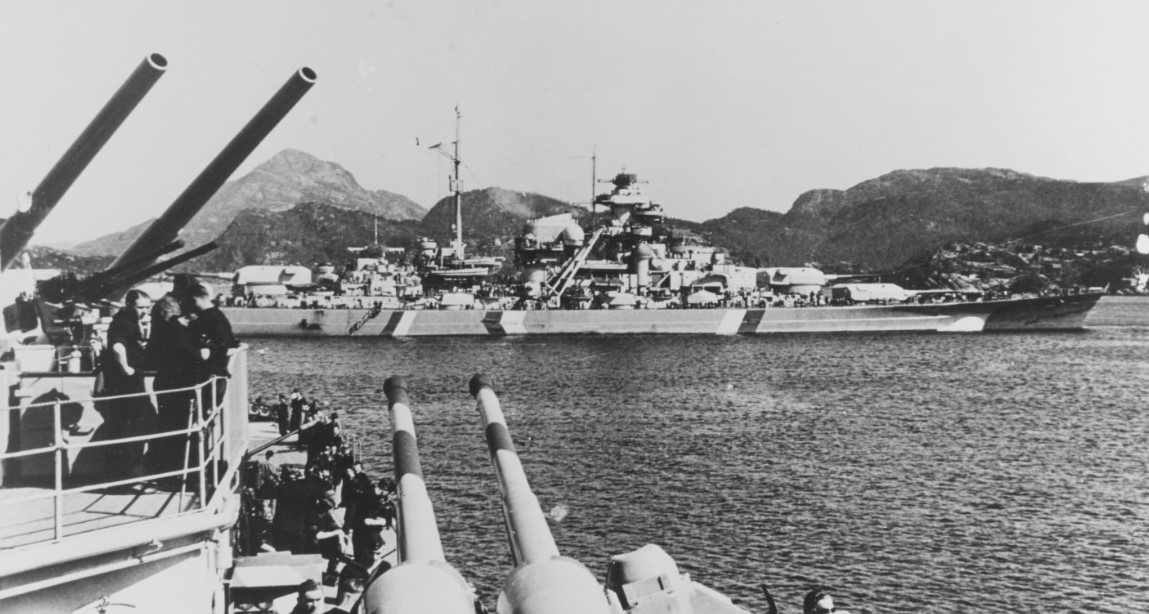

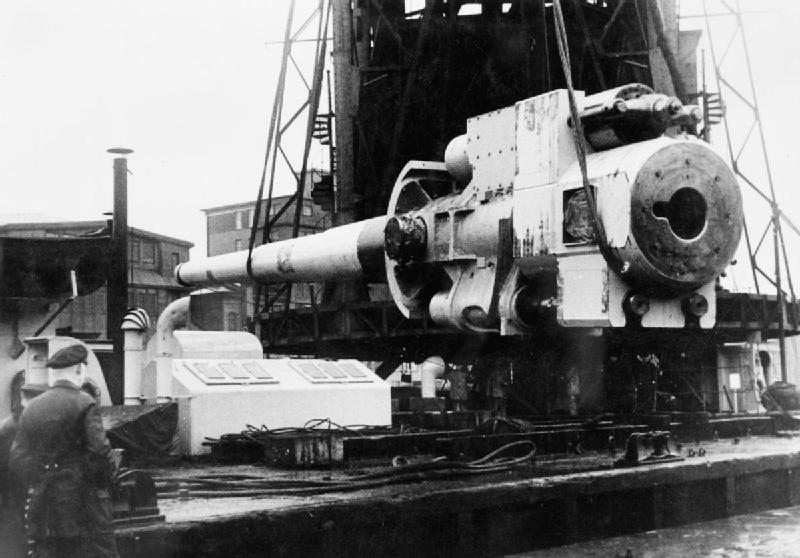
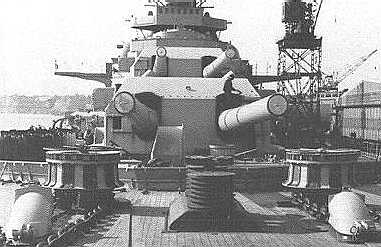
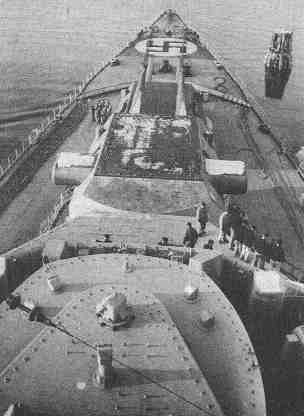
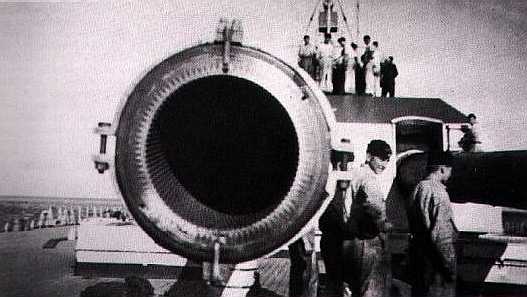

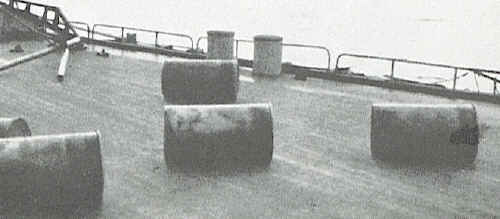
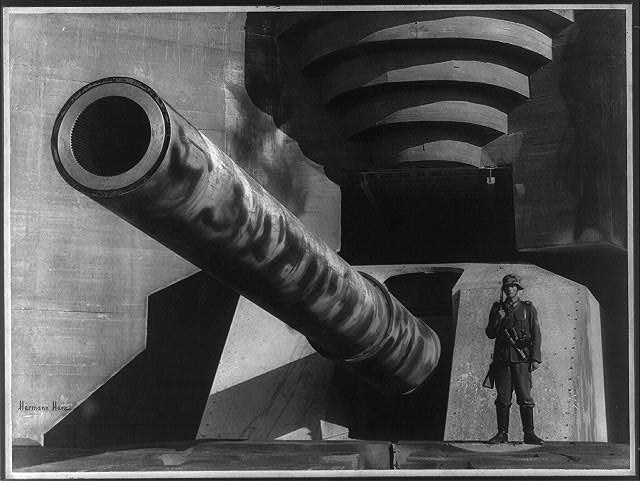
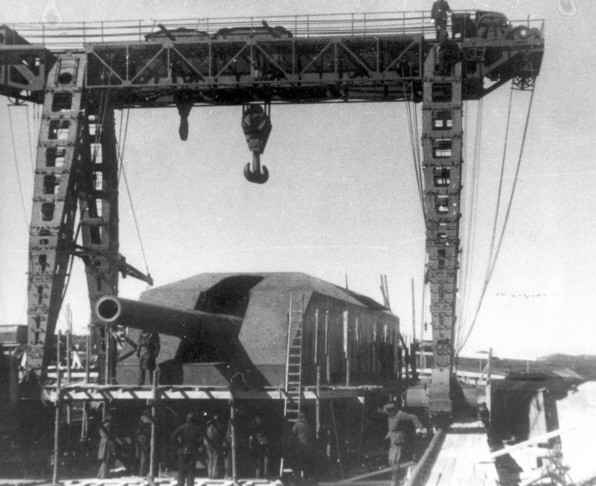
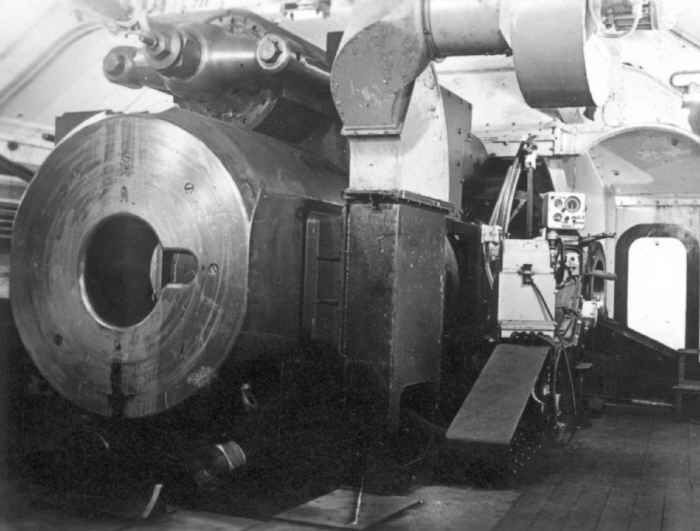
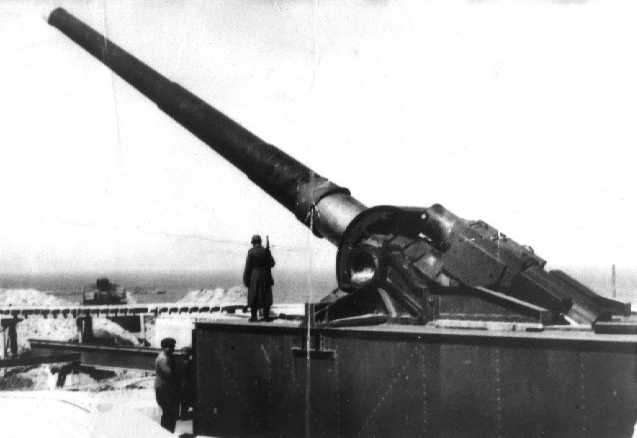
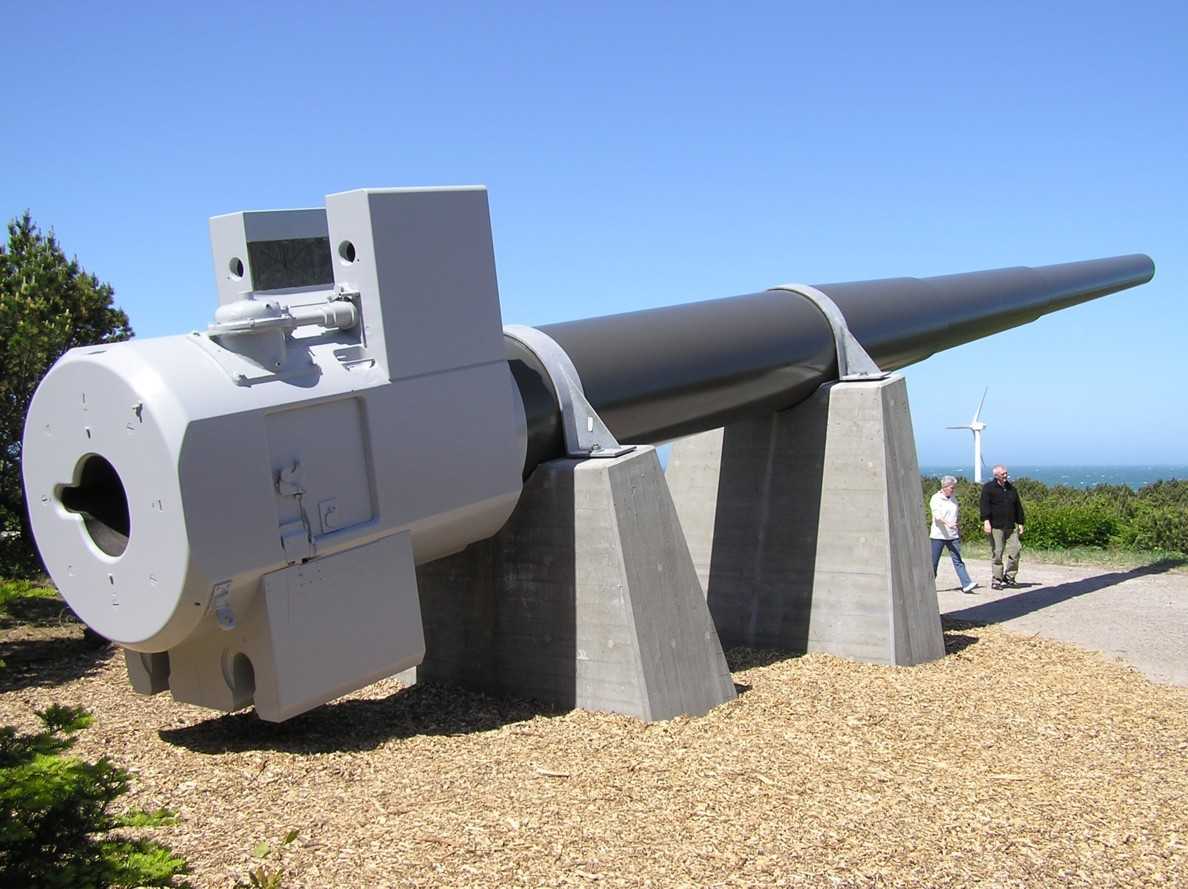
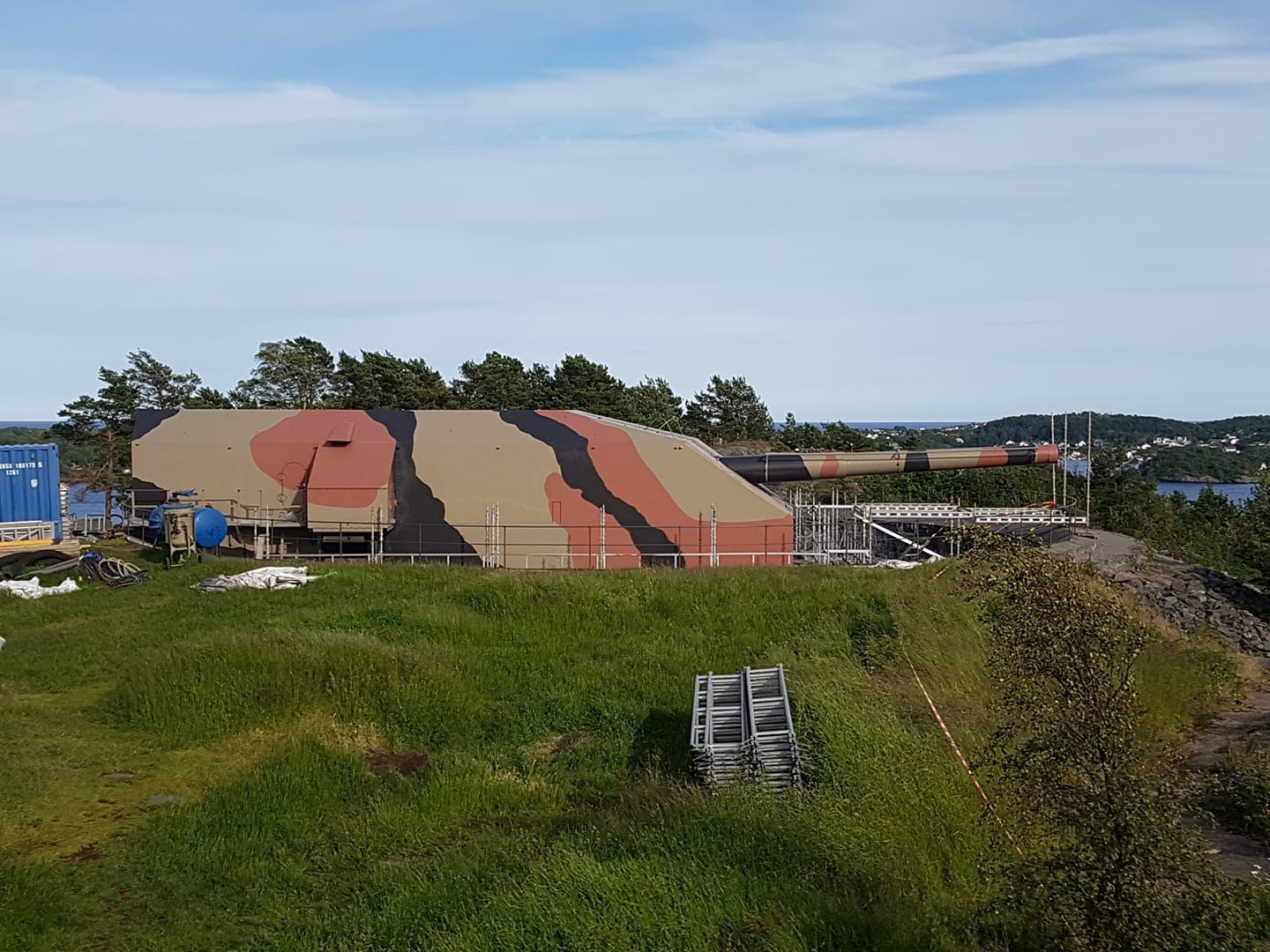
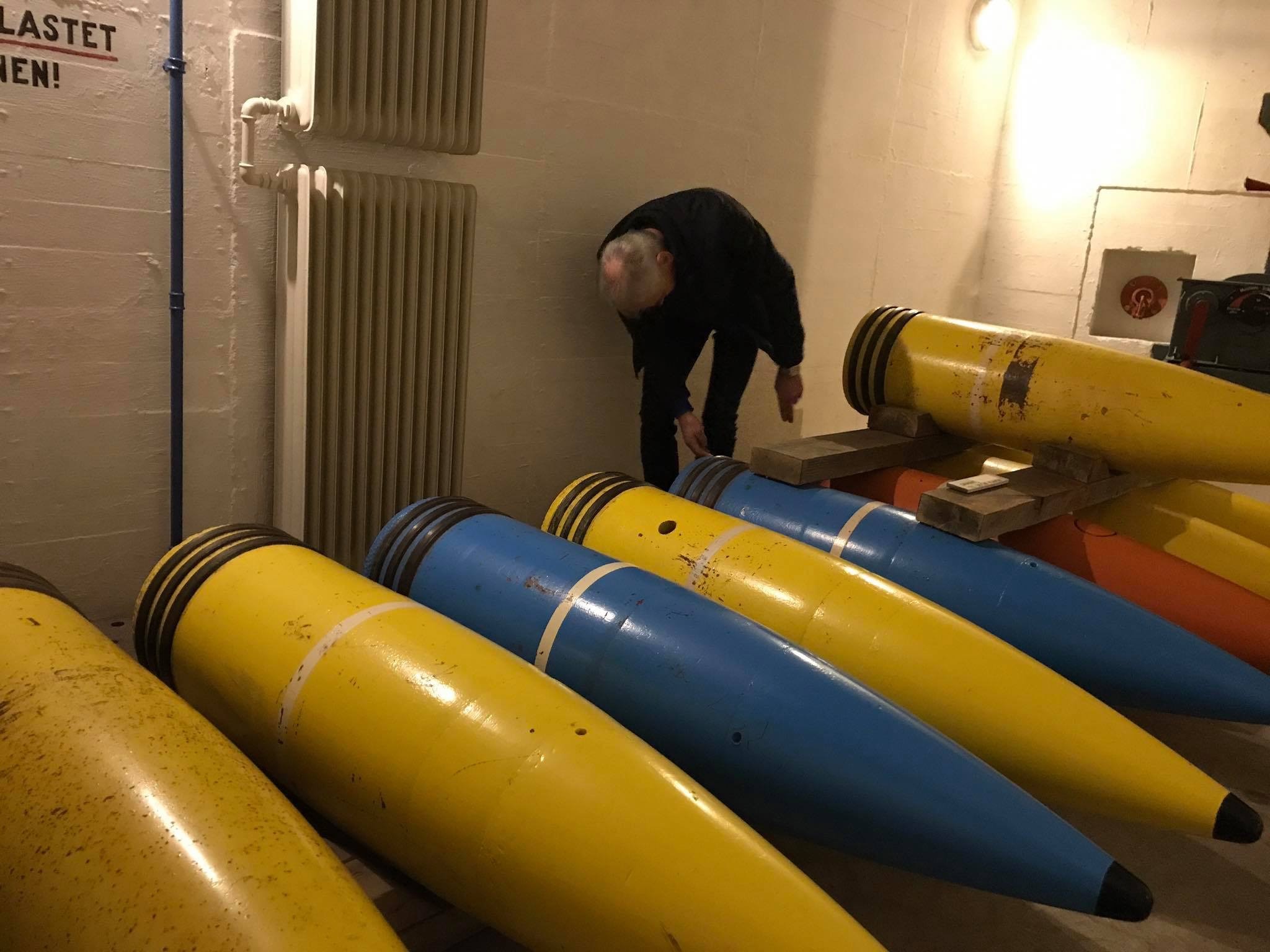
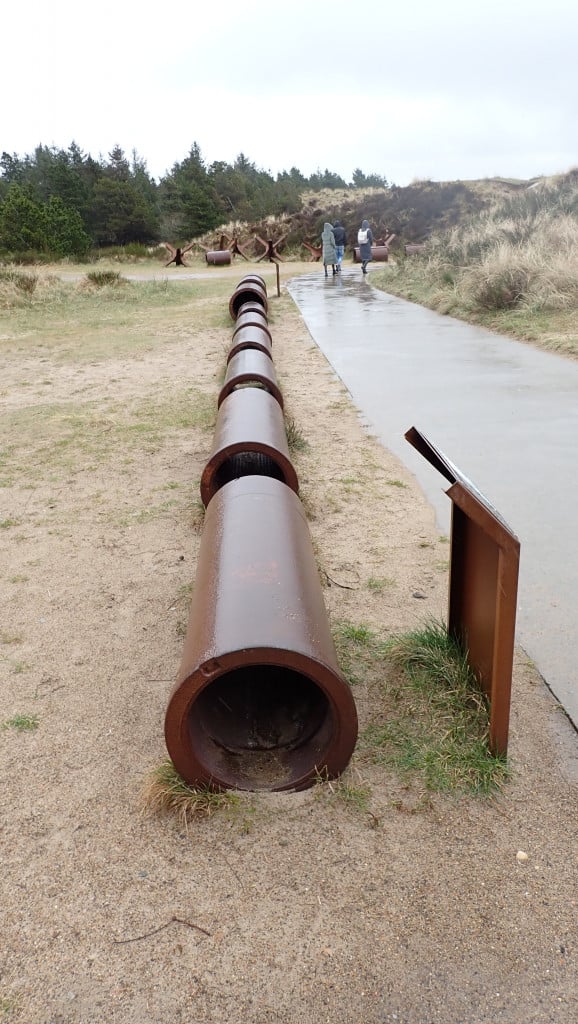
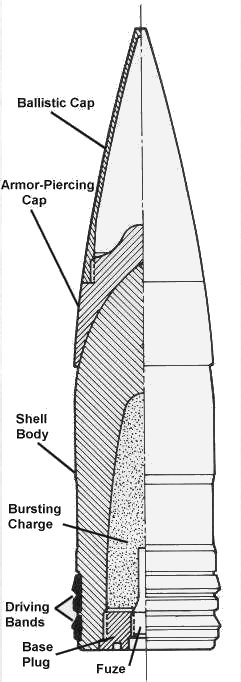
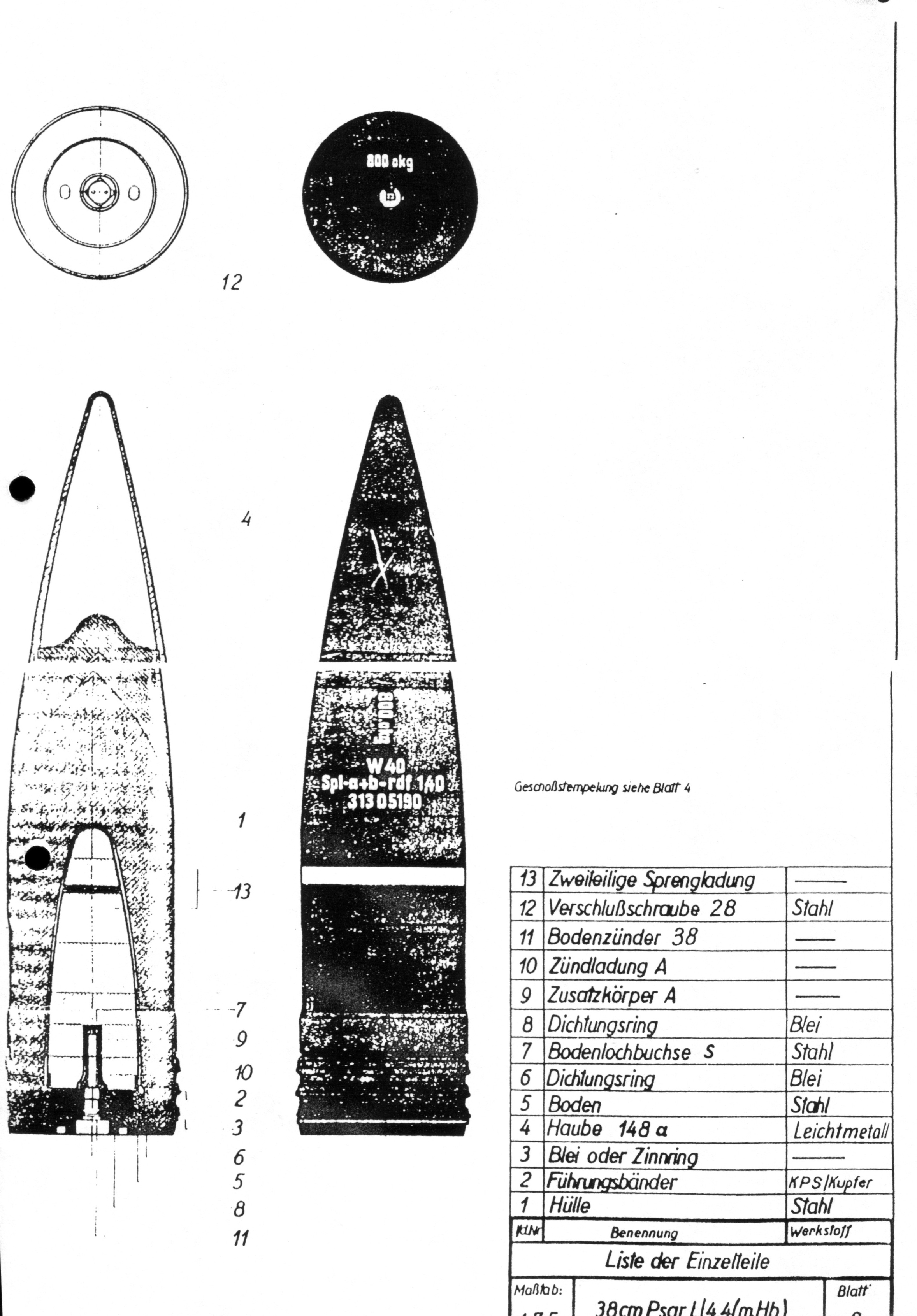
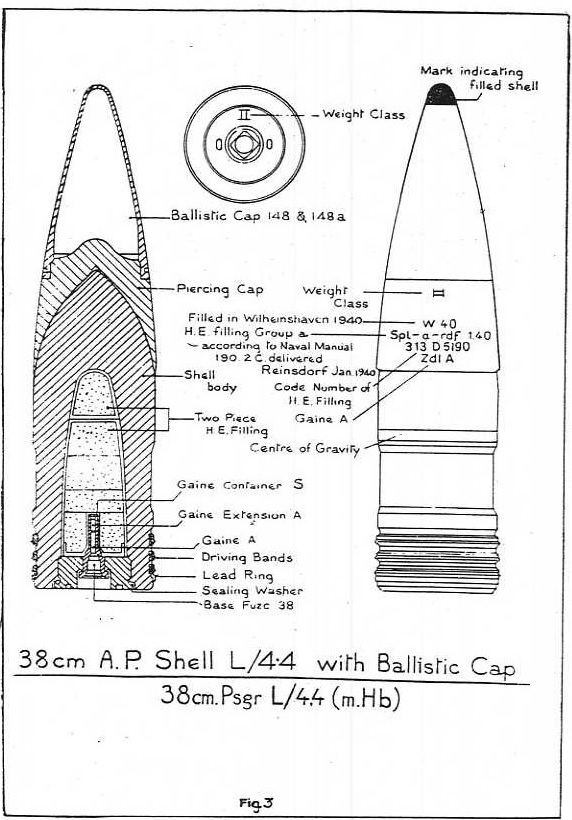
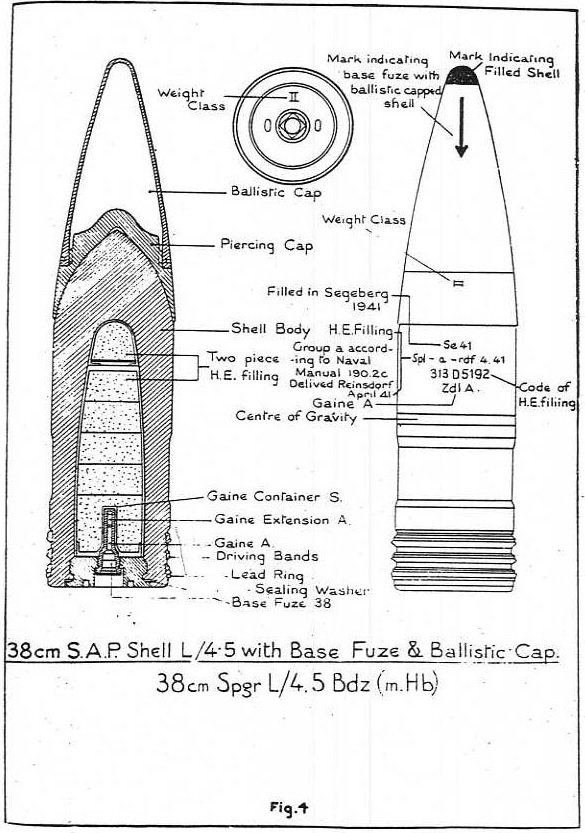
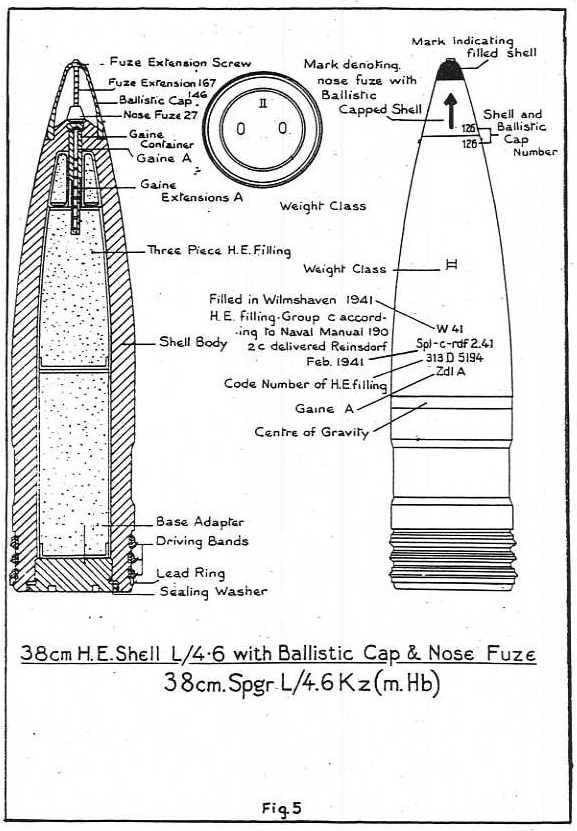
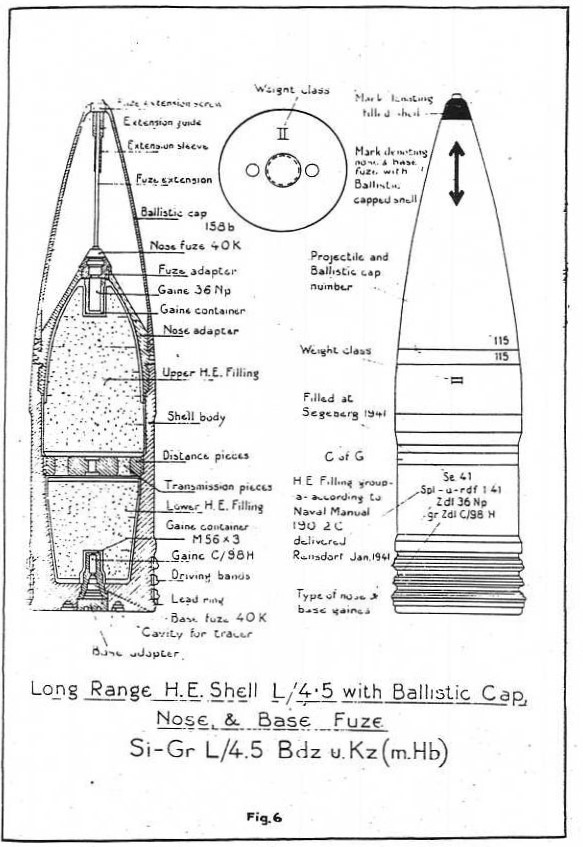
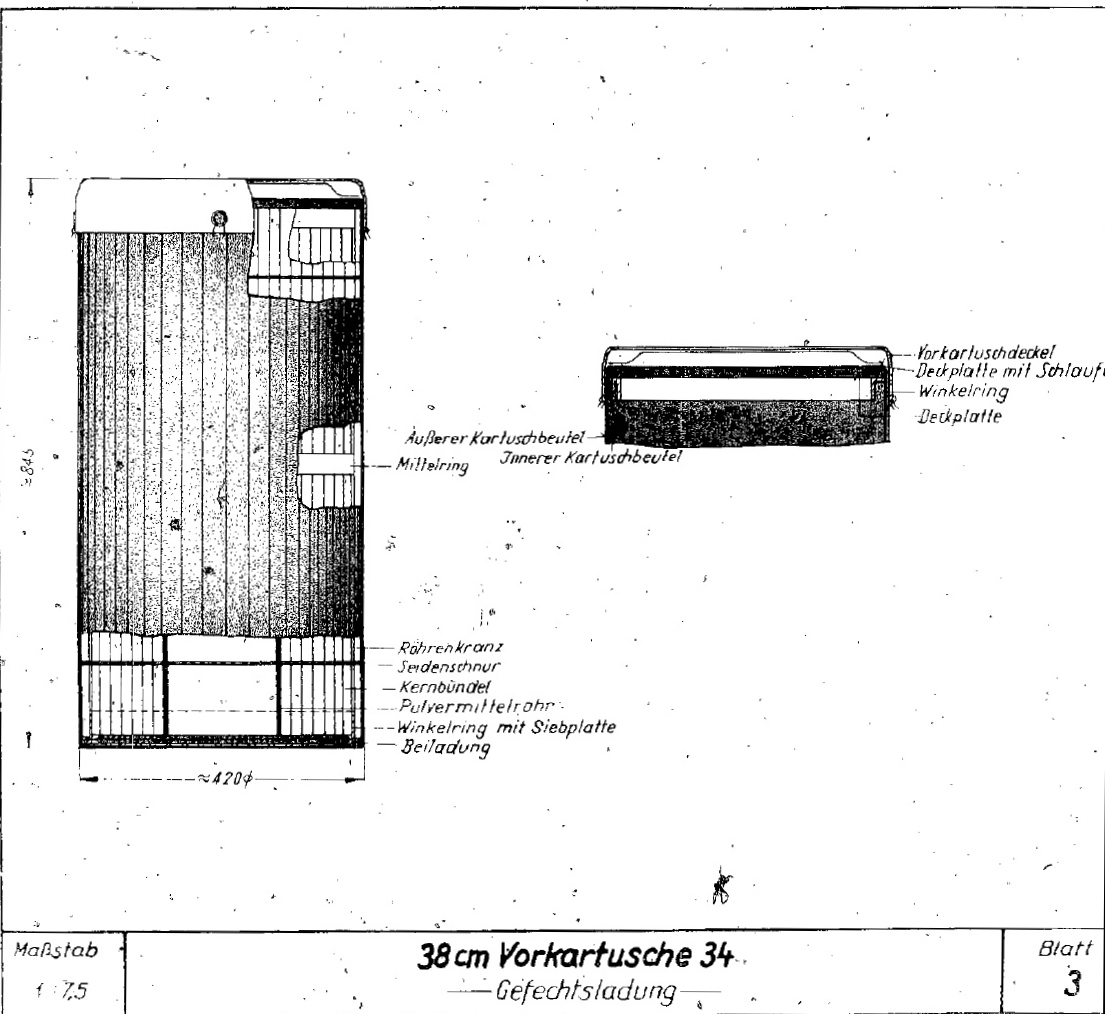
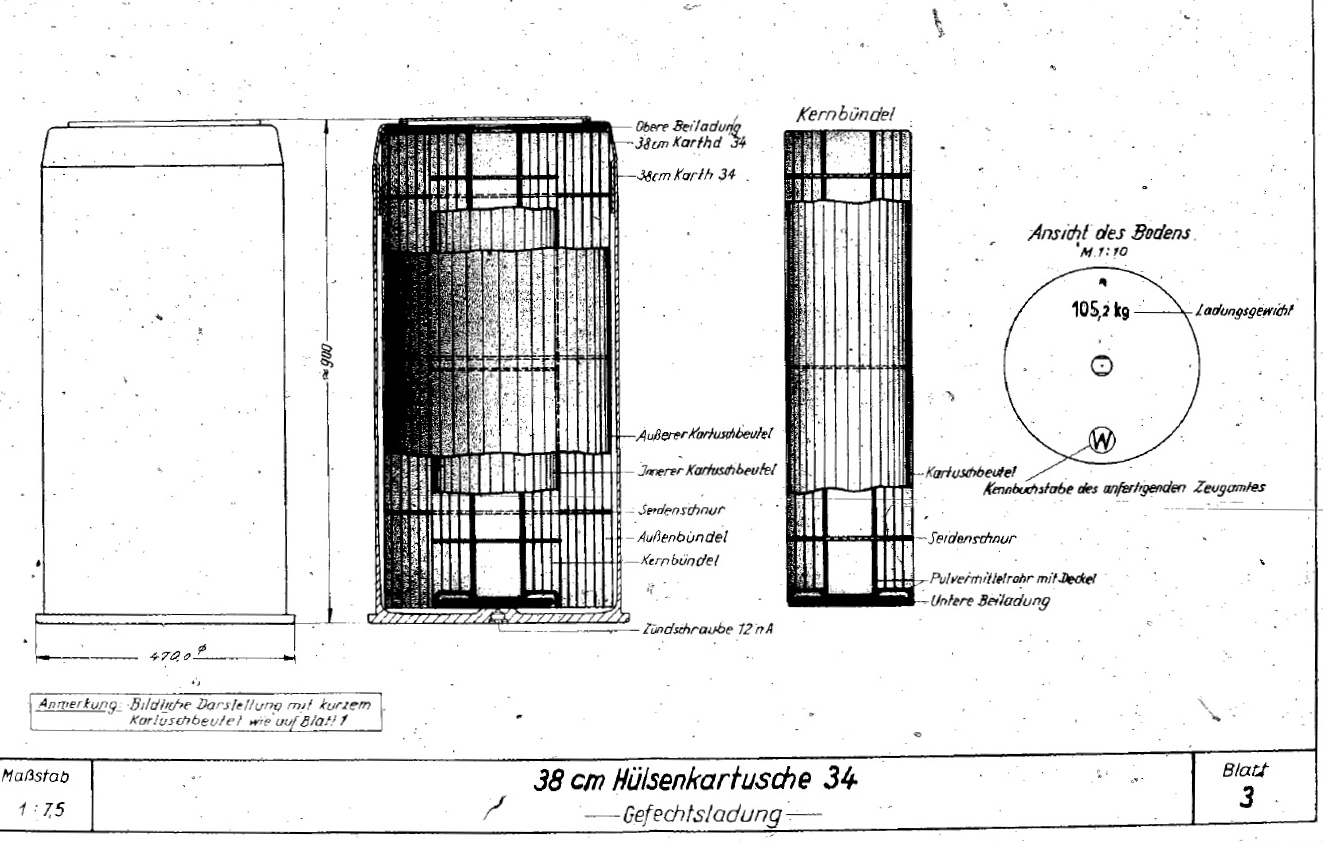
Additional Images at Axis History Factbook
Additional information about these weapons may be found in the INRO article, The Loss of HMS Hood
"Schlachtschiff Tirpitz" by Jochen Brennecke
"Anatomy of the Ship: The Battleship Bismarck" by Jack Brower
"Naval Weapons of World War Two" by John Campbell
"Battleships: Axis and Neutral Battleships in World War II" by W.H. Garzke, Jr. and R.O. Dulin, Jr.
"Battleship Bismarck: A Design and Operational History" by William H. Garzke Jr., Robert O. Dulin Jr., and William Jurens
"German Warships 1815-1945" by Erich Gröner
"German Artillery of World War Two" by Ian Hogg
"German Naval Guns: 1939 - 1945" by Miroslaw Skwiot
"Naval Guns: 500 years of Ship and Coastal Artillery" by Hans Mehl
"German Capital Ships of World War Two" by M.J. Whitley
---
"German Coast Artillery Equipment Employed in the Defence of the West Coast of Denmark" by British Intelligence Objectives Sub-Committee (BIOS)
---
"Munitionsvorschriften für die Kriegsmarine - Panzersprenggranaten mit Haube - a) Psgr (m.Hb)" M.Dv. Nr. 190,1A1 by Oberkommando der Kriegsmarine
"Munitionsvorschriften für die Kriegsmarine - Hülsenkartusche" M.Dv. Nr. 190,4A1 by Oberkommando der Kriegsmarine
"Munitionsvorschriften für die Kriegsmarine - Vorkartusche" M.Dv. Nr. 190,4A6 by Oberkommando der Kriegsmarine
"Übersicht über die für die Marinegeschütze und deren Abk K zu verwendende Munition und ihre Einzelteile einschließlich Salut- und Manöverladungen" M.Dv. Nr. 198 by Oberkommando der Kriegsmarine
"Anlage zur Übersicht über die für die Marinegeschütze und deren Abk K zu verwendende Munition und ihre Einzelteile einschließlich Salut- und Manöverladungen.- Munition für die Geschütze des Auslandes" M.Dv. Nr. 198 by Oberkommando der Kriegsmarine
AVKS Tests aboard Battleship Bismarck at The Battleship Bismarck website
---
Special help from Thorsten Wahl, Neil Stirling and Peter DeForest
11 February 2007 - Benchmark
02 April 2009 - Added comment regarding existing weapon
29 March 2010 - Added photograph of Batterie Todt gun
09 September 2010 - Fixed broken link
04 April 2011 - Additional information about coastal emplacements
16 April 2012 - Corrected typographical errors, added details on the Soviet Kronshtadt class
15 December 2013 - Redid photograph of gun being hoisted aboard Tirpitz
24 August 2014 - Added Turret Armor note
10 June 2016 - Converted to HTML 5 format
05 March 2018 - Reorganized notes
27 March 2019 - Added information about AA round, added to and reorganized ammunition table, added data and sketches of APC, main charge and fore charge from M.Dv. Nr. 190,1A1, M.Dv. Nr. 190,4A1 and M.Dv. Nr. 190,4A6, corrected year of Gneisenau bombing
28 June 2019 - Added link to Kristiansand Cannon Museum
23 July 2019 - Added photographs from Kristiansand Cannon Museum
25 August 2019 - Added link to AA Projectile section
05 May 2020 - Added comment regarding the use of AA projectiles by Tirpitz
06 June 2020 - Added color note to caption of projectiles at Kristiansand Cannon Museum
11 January 2023 - Added ammunition outfit for Bismarck
21 March 2023 - Corrected typographical error
03 April 2024 - Added sketches of Spgr. and Si-Gr projectiles, photograph of cut-up gun
28 August 2024 - Added burster notes and propellant information
14 November 2024 - Minor changes for clarity
03 January 2025 - Added note about French 380 mm guns
30 January 2025 - Additional propellant information
03 March 2025 - Added data to range tables, note regarding AP cap on 38 cm Spgr. L/4,5 Bdz (m.Hb) projectile and the sketches of the 38 cm Psgr. and 38 cm Spgr. Bdz projectiles
14 April 2025 - Corrected typographical errors and added to propellant data
